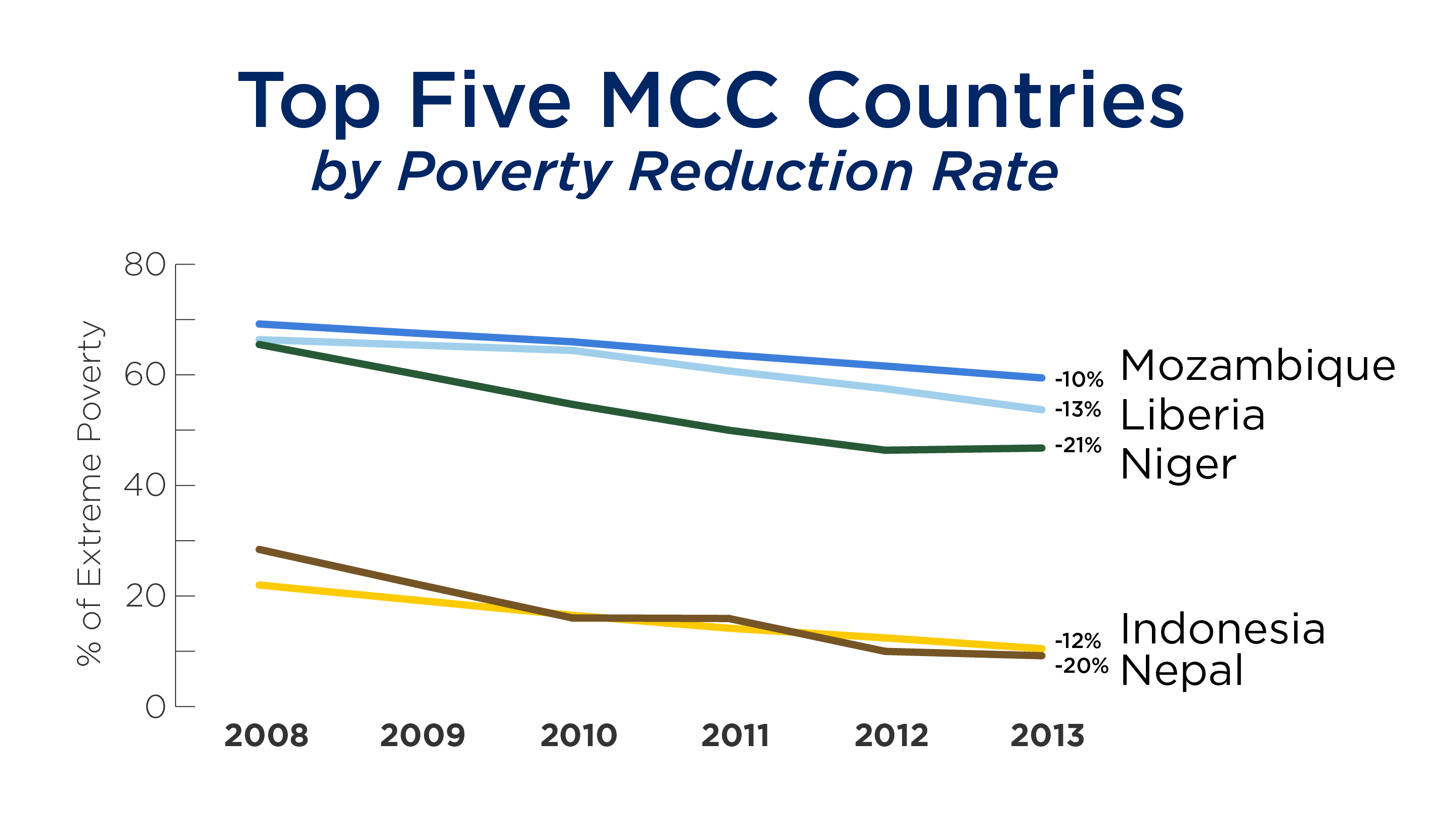Did you see the front-page headline last week about the huge decrease in extreme poverty? No? Sadly, no one did — there was no such story. Year after year, the data documenting one of the best good-news stories go largely unnoticed. So today, the International Day for the Eradication of Poverty, we’re taking a closer look at new poverty statistics released by the World Bank earlier this month.
So what were the headlines? The data and the accompanying report show that progress in reducing global poverty continues at a rapid pace. At a global level, extreme poverty — measured by the $1.90 a day international poverty line — decreased by 114 million people (in just one year!) between 2012 and 2013, leaving about three quarters of a billion people (767 million) around the world living in extreme poverty. All geographic regions saw a decrease in both the absolute number of poor and the proportion of people in poverty.
But not all of the news is overwhelmingly positive. Despite making slow progress, Africa continues to lag behind the rest of the world — a worrying trend. For the first time, more than half of the global poor reside in Africa.
These new data give MCC an opportunity to step back and examine its country selection model and the performance of our partner countries. MCC believes well-governed countries that make the right policy decisions are better positioned to attract private investment, accelerate economic growth, and promote poverty reduction, so we are selective in working only with poor countries that meet rigorous standards for policy performance. When we delve into the data, they confirm that MCC is partnering with some of the poorest countries in the world and that these countries are making significant progress in reducing poverty.
When looking at the 20 countries with the highest rates of extreme poverty, all 10 countries that passed their most recent MCC scorecard have engaged with MCC at some point. Of these 10 countries, three are currently implementing a compact (Liberia, Malawi, and Zambia), and four have completed a compact (Benin, Burkina Faso, Lesotho, and Mozambique). Niger recently signed its first compact with MCC, and Benin signed its second compact in 2015. So MCC is working in many countries with the greatest need, but have MCC partners also reduced poverty over time? In fact, that’s just what the data show.

MCC graphic based on World Bank data
According to new World Bank data, five MCC compact countries — Indonesia, Liberia, Mozambique, Nepal, and Niger — saw a decrease in extreme poverty of more than two percentage points, on average, each year from 2008 to 2013.
Between 2008 and 2013, 20 of 28 MCC compact countries (for which data are available) saw a decrease in extreme poverty by an average of more than six percentage points. Five MCC compact countries even reduced poverty by more than two percentage points, on average, each year over this five-year period: Indonesia, Liberia, Mozambique, Nepal, and Niger (see chart). This progress is a testament to the commitment these countries have made to their own development. The strong political will and policy performance exercised by these countries drive inclusive economic growth and poverty reduction, which are precisely the priorities MCC identifies and incentivizes through its policy scorecards and supports throughout compact implementation.
So what does this mean for MCC and the development community more broadly? First, given that extreme poverty is increasingly concentrated in Africa — where economic growth has less of an impact on poverty reduction than in other regions — the focus on inclusive economic growth needs to be that much sharper.
Second, while MCC partner countries are among the poorest countries, they are not the poorest — rather, the five countries with the highest poverty rates are all fragile states that have either suffered from recent conflict or are at the mercy of illegitimate governments — or both. While many post-conflict countries are making great strides forward, it’s much more difficult to sustain progress in countries actively in conflict or experiencing deteriorating governance. Reaching the poor, even in the most challenging conditions, is key to ending extreme poverty. For our part, MCC will continue to work with countries like Niger and Liberia, which have been recently affected by conflict but are making the right choices. If and when other conflict-affected countries with high poverty rates can get on the right track and pass MCC’s scorecard, the data suggest they could be strong candidates to partner with MCC.
Third, a significant number of the extreme poor live in middle-income countries, like MCC partner Indonesia. Ensuring these countries can access critical sources of development financing is an important consideration as the concentration of extreme poverty evolves over time. This extends far beyond development assistance as private sector investment and domestic resource mobilization become increasingly important in financing the development of these countries.
Above all, it’s critical to shine a light on these data — particularly on the International Day for the Eradication of Poverty. At a time of grim headlines, we shouldn’t lose sight of the fact that extreme poverty is on the decline. While recognizing that there is certainly much work left to do, we should celebrate the huge progress that continues to be made in combatting global poverty. That’s the headline I’d like to see.

